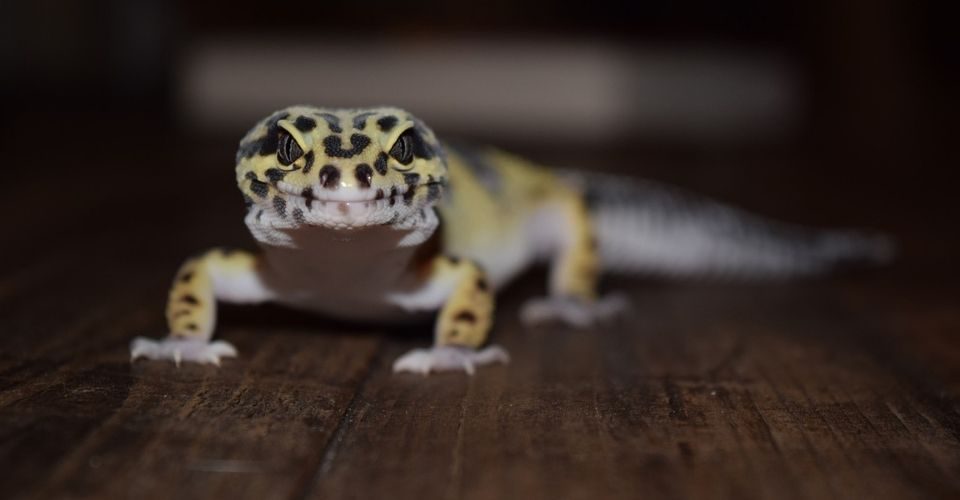If you own a Leopard gecko and have recently noticed it is refusing to eat, you may get worried. This may compel you to start an extensive online search for answers to the question ‘how long can Leopard geckos go without food?’ We know the answer; they can go 10 – 14 days without food. Yes, adult Leopard geckos can go as long as 2 weeks without food, and this is perfectly normal behavior for them.
In this article, we will closely look at Leopard geckos and their food habits and explore the common and some uncommon reasons behind a Leopard gecko refusing to eat. So keep on reading to learn all you need to know.
Reasons Why Your Gecko May Be Refusing Food
Now that we know how long Leopard geckos can go without food, it is important to understand the common reasons behind this behavior. Geckos are cold-blooded reptiles—they don’t need food to warm their bodies. They rely on external sources—like the heat from the Earth and sun for keeping their bodies warm. They don’t need to burn calories to warm their bodies. This means they wouldn’t need as much food as is required by mammals. They can go without food for longer periods as compared to other mammals, who need to eat more frequently. Other reasons for geckos to refuse eating and survive without food are as follows:
Lower Temperatures
Geckos cannot digest their food properly if they are cold. This can make them abstain from food. As Leopard geckos depend upon external sources to keep their bodies warm, you need to make their artificial habitat also maintain a proper temperature. If the tank is too cold, the Leopard gecko may refrain from eating anything. It is advisable not to let your gecko’s tank temperature go below 75°.
Dehydration
Leopard geckos can stop eating their food if they are not adequately hydrated. If you notice your gecko’s skin has changed its color or appearance, it can be a sign of dehydration. So make sure your gecko has access to clean and fresh water in its tank. Also, keep changing and cleaning the water bowl in your pet’s tank so that there are no foreign substances—like feces or feathers. This would keep your pet safe from consuming contaminated water.
Stress
Another common reason which can make your Leopard gecko refuse to eat is stress. Yes, geckos too can become stressed—their reasons for that, however, may be different than us.
They may become stressed when something changes in their environment—like being shifted to a new cage or moving to a new home. Other reasons for stress can be a change in their tank’s temperature levels, having problems with their feeder, or maybe an illness. Such stress can make your gecko refuse to eat for longer periods of time.
If you notice your gecko is displaying other signs of stress as well, like going into hiding, swaying its tail, showing aggression, or having a changed appearance, it should be taken to a vet. This will help you identify the reason behind its stress, so you can avoid those in the future. Once relaxed, your pet will start eating normally again.
Breeding Season
Leopard geckos are also known to stop eating food when it is their breeding season. The males, especially, go without food in that time period. For Leopard geckos on the northern side of the Equator, the breeding season begins in January. But if you do not intend to breed your Leopard gecko, then the pet shouldn’t refuse food, even when it is its breeding season.
If a Leopard gecko is breeding, you should feed it with healthy foods, maintain its tank’s temperature, and also provide it with adequate amounts of light. If it still refuses to eat, you can try making changes to its husbandry arrangements. Additionally, care should be taken to house the male geckos separately from female geckos.
If your gecko doesn’t eat even after you have made all the necessary changes and there is nothing much you think you can do, it is best to take your pet to a vet’s clinic.
4 Less Common Reasons Your Gecko May Be Refusing to Eat
- Fecal Impaction—it would stop eating if it is constipated.
- Injury or pain: Leopard geckos would stop eating if they are injured or are suffering through some pain.
- Overfeeding: Eating more than its requirements can also make a gecko stop eating.
- Ovulation period: Females who are of the breeding age will eat less than normal when they are ovulating. This can last for 1 – 3 months.
How to Tell Your Leopard Gecko Is Healthy?
After you know how long leopard geckos can go without food, you also need to ensure they are healthy. You should keep a check on your gecko and make sure it is not losing weight. A Leopard gecko uses its tail as a fat reserve. So, if its tail is thinning, it means the gecko is facing weight loss. Another sign of weight loss is a pronounced and noticeable backbone. If you see these signs, it is time to take your gecko for a vet’s visit.
But if none of these signs are present, it means your gecko is healthy and would soon start eating. Just make sure it has access to clean water so it doesn’t become dehydrated. Other than that, it is completely normal for a leopard gecko to stop eating for long periods. An adult Leopard gecko can go as long as 4 weeks without food. A baby Leopard gecko, on the other hand, can go without food for a maximum of 10 days.





